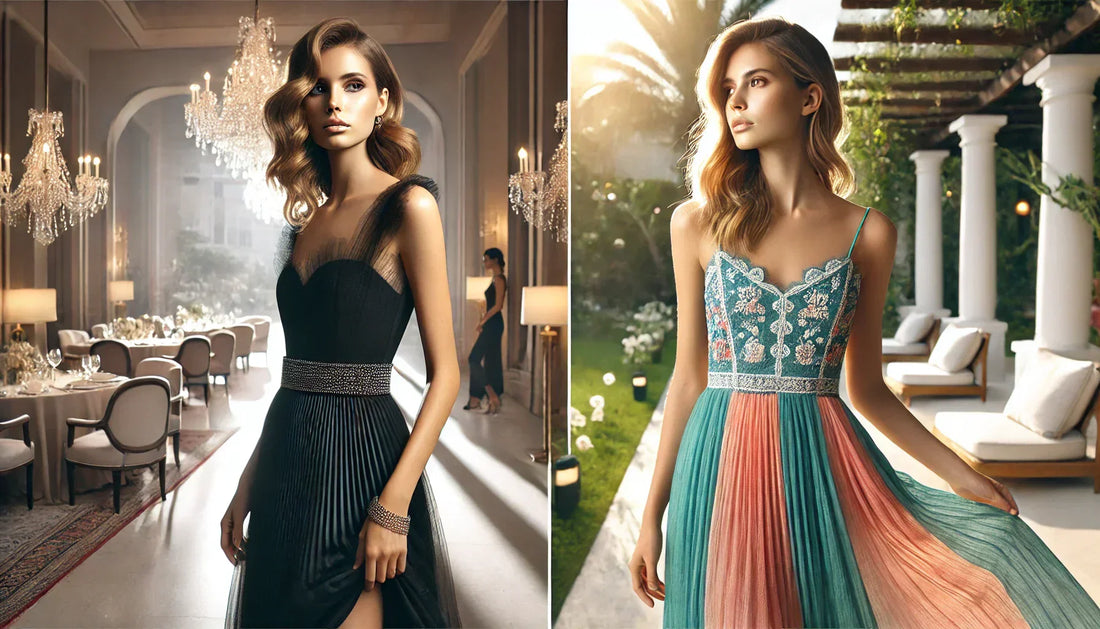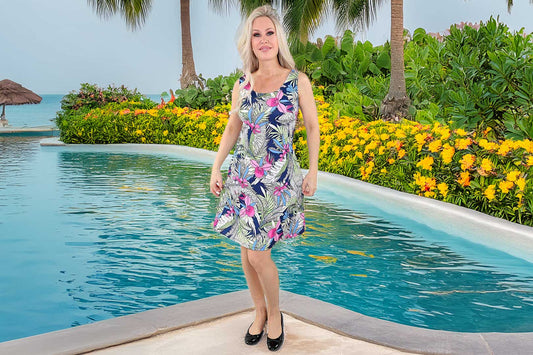
Formal Dress vs Casual Dress for Women – Which One Should You Choose?
Share
Choosing the right outfit can be a daunting task, especially when deciding between formal and casual attire. Whether you're heading to a wedding, a business meeting, or a casual brunch, knowing the difference between these dress codes can help you make the right impression. This article will explore the distinctions between formal and casual dresses for women, along with the latest trends for summer 2025.
- What Is a Formal Dress?
- What Is a Casual Dress?
- Key Differences Between Formal and Casual Dresses
- Materials and Fabrics
- Design and Fit
- Occasions and Use
- How to Choose Between Formal and Casual Dress
- FAQs About Formal and Casual Dresses
What Is a Formal Dress?
A formal dress is designed to convey elegance, sophistication, and professionalism. These dresses are often worn to events where a higher level of decorum is required, such as weddings, galas, and business meetings. Formal dresses typically feature high-quality materials, refined designs, and classic silhouettes.
Characteristics of Formal Dresses
- Materials: Silk, satin, velvet, and wool.
- Colors: Neutral tones like black, navy, and beige with occasional bold hues.
- Fit: Tailored and structured for a polished look.
- Accessories: Paired with elegant jewelry, heels, and clutch bags.
Types of Formal Dresses
- Evening Gowns: Long and elegant for black-tie events.
- Cocktail Dresses: Shorter than gowns, suitable for semi-formal occasions.
- Pant Suits: Sleek and stylish for business or modern events.
- A-Line Dresses: Universally flattering and timeless.
What Is a Casual Dress?
Casual dresses prioritize comfort and self-expression over formality. These dresses are ideal for everyday wear, social gatherings, and relaxed outings. Casual fashion allows for more creativity, incorporating various styles, fabrics, and accessories.
Characteristics of Casual Dresses
- Materials: Cotton, linen, jersey, and denim.
- Colors: Bright hues, pastels, and fun prints.
- Fit: Loose, comfortable, and easy to wear.
- Accessories: Minimal jewelry, sneakers, and crossbody bags.
Types of Casual Dresses
- T-Shirt Dresses: Comfortable and stylish for daily wear.
- Maxi Dresses: Flowy and perfect for summer.
- Wrap Dresses: Flattering on all body types.
- Shirt Dresses: A casual yet chic option.
Key Differences Between Formal and Casual Dresses
Understanding the differences between formal and casual dresses involves examining their materials, design, fit, and appropriate settings.
Materials and Fabrics
Formal Dresses:
- High-quality, luxurious fabrics like silk, satin, and velvet.
- Often lined for a refined, polished finish.
Casual Dresses:
- Made from breathable, comfortable fabrics like cotton and linen.
- Lightweight and designed for flexibility.
Design and Fit
Formal Dresses:
- Structured and tailored to enhance body shape.
- Features like pleats, darts, and elegant draping.
Casual Dresses:
- Relaxed fits with simpler constructions.
- Often include elastic waistbands and minimal tailoring.
Occasions and Use
Formal Dresses:
- Weddings, galas, business events, and formal dinners.
Casual Dresses:
- Brunches, errands, casual parties, and travel.
How to Choose Between Formal and Casual Dress
Choosing the right dress depends on several factors, including the event, your personal style, and comfort level.
Factors to Consider
Event Type:
- Formal events require sophisticated attire.
- Casual events allow for more relaxed choices.
Dress Code:
- Follow event-specific guidelines if provided.
Time of Day:
- Evening events tend to be more formal.
Location:
- Outdoor events may call for lighter, more breathable fabrics.
Style Tips for 2025
- Formal Dresses: Opt for pastel shades and satin textures.
- Casual Dresses: Embrace vibrant patterns and sustainable fabrics.
- Accessories: Minimal jewelry for casual looks; statement pieces for formal outfits.
FAQs About Formal and Casual Dresses
What Is the Primary Difference Between Formal and Casual Dresses?
Formal dresses are typically structured, elegant, and made from luxurious fabrics. Casual dresses are more relaxed and crafted from comfortable, breathable materials.
Can a Casual Dress Be Worn to a Formal Event?
Generally, no. However, certain casual dresses can be dressed up with accessories and layers if the event's dress code permits smart-casual attire.
What Colors Are Best for Formal Dresses?
Classic neutrals like black, navy, and beige are timeless choices. Jewel tones and pastel shades are also popular for formal occasions.
How Can I Make a Casual Dress Look More Formal?
Add a tailored blazer, switch to high-heeled shoes, and accessorize with elegant jewelry.
Are There Dress Styles Suitable for Both Formal and Casual Settings?
Yes. Wrap dresses and midi dresses can transition between casual and formal settings with the right styling.
Choosing between a formal and casual dress involves understanding the differences in design, material, and occasion. Formal dresses exude elegance and are ideal for significant events, while casual dresses offer comfort and freedom for everyday wear. By considering your event, personal style, and the latest 2025 trends, you can confidently choose the perfect dress for any occasion.







